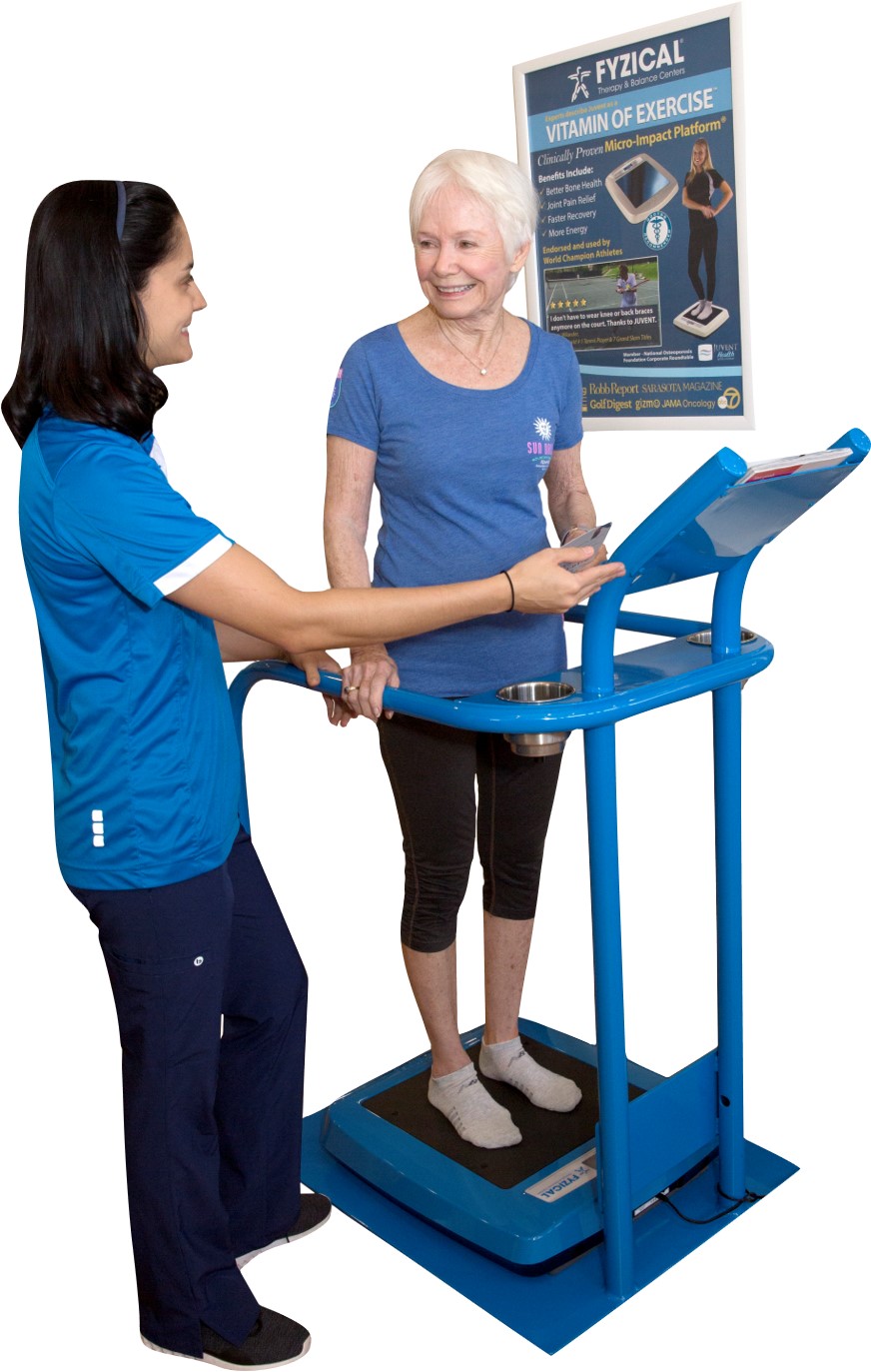Have you been told you have osteopenia or were diagnosed with osteoporosis?
Are you interested in trying to get your bones stronger without medication? At FYZICAL, our physical therapists are up to date on the most advanced strategies to improve bone health. We will guide you through all the steps you can take to ensure your bones stay strong, including our Juvent micro-vibration unit, so you are safe doing what you love!
How Physical Therapy Can Help Improve Your Bone Health
t is estimated that over 10 million Americans over 50 years have osteoporosis, with a higher prevalence in women (30%) than in men (15%). Osteoporosis is characterized by losing bone mineral density (BMD) and increased susceptibility to fractures. For some people, the first indication of osteoporosis is a fracture. Fractures are far more common in women than men, with the lifetime risk for women being 50%, whereas it is 20% for men. The most common sites of fractures are the hip and spine. Fractures to these areas typically result in disability, decreased independence, and an increased risk of death.
The good news is you can prevent and sometimes stop or reverse your bone density.
At FYZICAL, our physical therapists use the most advanced treatments, including micro-vibration, to provide you with solutions that work!
Call today to see if we can help you improve your bone health and if Juvent’s micro-vibration is right for you!
Why is bone health so important?
- Physical inactivity
- Nutritional deficiencies (i.e., Vitamin D and lack of calcium)
- Low weight
- Low exposure to sunlight
- Use of corticosteroids (i.e., Prednisone)
- Tobacco smoking
- High alcohol consumption


